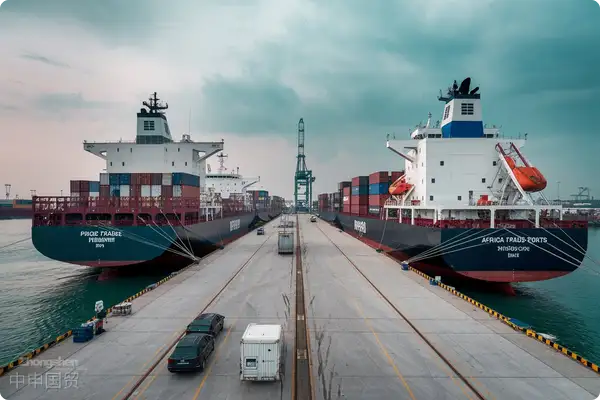- Shanghai Zhongshen International Trade Co., Ltd. - Two decades of trade agency expertise.
- Service Hotline: 139 1787 2118

Deciphering the Core Customs Clearance Barriers for Imported Electrical Equipment
Global Electrification in 2025Equipment ImportsThe market size is projected to exceed $2.3 trillion, with China maintaining its position as the largest importer. Behind the seemingly thriving market, cases of cargo detention due to misjudgments in technical standards have increased by 17% year-on-year, exposing structural deficiencies in the professional capabilities of import enterprises.
The Hidden Cost Trap of Professional Certification
The coverage of China Compulsory Certification (CCC) will expand to include three additional types of industrial frequency conversion equipment by 2025, yet 28% of importers remain confused.Voluntary certificationandAccessibility Certification:
- Misjudgment Cost of Authentication Type
- A German company suffered losses due to the return shipment of an entire container caused by substituting CE certification for CCC.Maritime TransportationDemurrage + detention fees exceed $120,000.
- Southeast Asian supplier's counterfeit UL certification seized by customs, purchasing party bears 100% liability for breach of contract.
- New Certification Regulations for 2025
- Industrial robot safety certification adds EMC testing module.
- photovoltaicThe inverter energy efficiency standard has been upgraded to Tier 3 level.
The fatal details in customs declaration documents.
In the General Administration of Customs' 2025 new version of the declaration system, the error rate in commodity code declarations directly affects the probability of inspection:
- Key declaration elements
- The rated voltage error of ±5% must be declared separately.
- Lithium battery-equipped devices must indicate the Wh value.
- Blind spots in document comparison
- Verification of Consistency Between Commercial Invoice and Bill of Lading in Marking Information
- It is recommended to verify through the following methods:The mapping relationship between HS codes and customs declaration forms.
The Three-Dimensional Game of Tariff Calculation
In the latest 2025 tariff scheme, there are electrical equipmentcompound taxationandAd valorem taxationSuperimposed application of:
- Determination of Basic Tax Rate
- Under heading 8504.40, the provisional duty rate for electric motors is 3%, but it reverts to 8% for those with a power exceeding 150kW.
- Special VAT Treatment
- Time limit requirements for creditable VAT documents in import procedures
- Dispute Resolution Mechanism for Residual Value Assessment of Second-hand Equipment
Hidden risk points in the transportation plan
A typical case encountered by a US-funded enterprise in Q1 2025 reveals deep-seated contradictions in the transportation process:
- Selection of Ocean Shipping Solutions
- Differences in Moisture-proof Standards Between Flat Rack Containers and Open-top Containers
- Port handling restrictions for oversized equipment (>12m)
- Loopholes in insurance clauses
- Conditions for triggering war risk surcharge
- The calculation basis for general average contribution
Long-term compliance costs of subsequent supervision
The General Administration of Customs' initiative to be implemented in 2025Whole-life cycle supervisionMechanism requiring importers to take responsibility for equipment usage:
- Compliance Management
- Unauthorized alteration of equipment usage is prohibited (e.g., converting industrial equipment to civilian use).
- Obligation to trace the origin of replacement parts for maintenance.
- Utilize the China - ASEAN Free Trade Agreement (ACFTA) to reduce tariffs, and a Form E certificate of origin is required.
- Chinese Conversion Standards for Technical Documentation
- Domestic reserve requirements for core component inventory
The value of professional agency services lies in establishingRisk firewall mechanism: Through three major modules—pre-classification review, compliance pre-inspection, and tariff simulation calculation—the customs clearance anomaly rate is controlled below 0.3%. After adopting end-to-end agency services, a multinational corporation achieved a 64% reduction in annual port demurrage costs and increased compliance audit pass rates to 98.7%, demonstrating the irreplaceability of professional services in complex trade environments.
Related Recommendations
? 2025. All Rights Reserved. Shanghai ICP No. 2023007705-2  PSB Record: Shanghai No.31011502009912
PSB Record: Shanghai No.31011502009912










